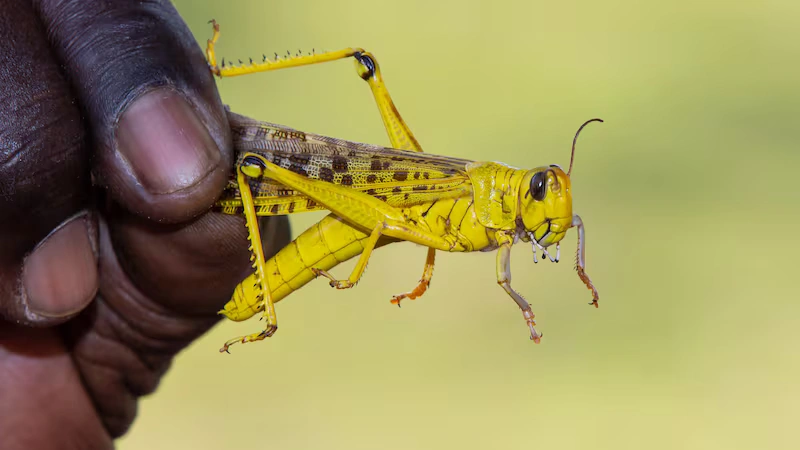Researchers at the University of Cambridge, England, have developed a new method using weather data and advanced computational models to predict where locust swarms will strike next. This breakthrough could help manage locust outbreaks before they escalate into serious crises.
The Problem with Desert Locusts
Desert locusts usually live solitary lives, but extreme weather, such as heavy rainfall, can trigger them to swarm in massive numbers. These swarms can cover large areas, consuming enough crops in a single day to feed 35,000 people. This can lead to food shortages, higher prices, and even riots or mass starvation in affected regions.
How the Model Works
The new model factors in the locusts’ life cycle, predicting their movement as they search for food and breeding grounds. It can forecast swarm movements in both the short and long term, allowing authorities to spray pesticides in targeted areas before the locusts cause widespread damage.
Until now, controlling locust swarms has been unpredictable. The researchers describe past methods as “hit and miss.” Published in PLOS Computational Biology, this model enables a faster and more effective response to developing threats.
Impact of Climate Change
Climate change is worsening the situation, with events like cyclones and heavy rains creating favorable conditions for locust breeding. This leads to more frequent and larger swarms. The model aims to help manage these challenges by providing early warnings and better preparation.
Statements from Experts
Dr. Renata Retkute, lead author of the study, said, “During a locust outbreak, we can now predict where swarms will move several days in advance, allowing for targeted control measures.”
Prof. Chris Gilligan added, “Responding quickly is crucial to prevent major crop losses. Huge swarms can lead to desperate situations, including starvation. This model allows us to act efficiently rather than starting from scratch.”
Lessons from the 2019-2021 Upsurge
The need for this model became clear during the 2019-2021 locust upsurge, which spanned from Kenya to India, devastating crops like wheat, maize, and sugarcane. The response was fragmented, with data collected from various sources, making it inefficient.
Dr. Retkute noted, “The last response was ad hoc and less effective. This comprehensive model provides a structured approach to managing future outbreaks.”
Preparing for the Future
This tool will assist national governments and international organizations like the UN’s Food and Agriculture Organization (FAO) in monitoring, forecasting, and controlling locust swarms. It also addresses the lack of preparation in countries that have not faced locust outbreaks for years. Many of these nations lack the necessary surveillance teams, aircraft, and pesticides.
With climate change altering locust patterns, better planning is essential. The researchers emphasize that this model is a timely and critical advancement in managing one of the world’s most damaging migratory pests.








